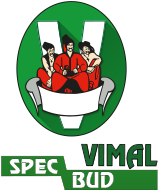Milling is a machining process that uses a tool with multiple cutting edges (teeth). Each tooth acts as a cutting tool. Milling is used in various lathe operations. The main motion is the rotation of the milling cutter, and the feed motion is the translational movement of the workpiece.
Milling metal achieves the required surface roughness and precision class close to the specified, while reducing time for subsequent finishing operations. Milling services are performed exactly according to the client's requirements.
Applications of milling are diverse: metallurgy, mechanical engineering, jewelry manufacturing, woodworking, design, and architecture.
Types of milling performed on appropriate machines:
- Vertical milling — for horizontal, inclined surfaces and chamfers; provides high accuracy.
- Longitudinal milling — for cast iron and steel body parts; uses carbide-tipped or cylindrical end mills.
- Horizontal milling — for rectangular and shaped grooves and edges (e.g., dovetails); tool makes two passes.
- Thread milling — for cutting threads on cylindrical parts, includes conventional and climb milling.
- Universal milling — on universal machines with rotary tables and additional heads, allowing multiple operations at once.
- CNC milling — used for milling, drilling and boring; 5-axis milling for complex parts. Combining CNC machining operations saves time.
Precision of milling machines is key to product quality.
We perform milling according to drawings or sketches. Our professional turner-millers select the optimal machining mode for each surface. Milling on a lathe requires the correct choice of cutter and cutting tool geometry, important for productivity and cost-efficiency. Quality depends significantly on the tool. Сукупність усіх перелічених факторів визначає якість оброблюваних деталей.
Process steps:
Regarding the milling technological process, it consists of several sequential steps that must be followed:
- The blank is carefully fed to the rotating cutter.
- The table is moved away, and spindle is stopped.
- The cut depth is set.
- Spindle is started.
- The workpiece on the table is fed to the cutter.
We offer:
- Serial production of parts;
- Individual discount systems for large orders;
- Non-serial and prototype manufacturing;
- Guarantee compliance with drawings;
- Accurate dimensional control, tolerances and materials;
- Precise production planning;
- Timely delivery;
- Individual approach to each order.
To order services, provide technical plan, sketch, or drawing. If no documentation — we offer full engineering services including design, calculations, and implementation.
We also develop and manufacture specialized equipment for production launch at client site. Milling cost is calculated individually.
Why choose us?
- Individual approach and adherence to deadlines;
- Large equipment park for big orders;
- Flexible discounts for serial production;
- Prototype and custom parts manufacturing;
- Experienced and qualified specialists ensure quality;
- Strict quality control at all production stages;
- Economically justified service prices.
We are located in Chernihiv and perform milling of any complexity. Order services online or by phone. (Go to contacts)
